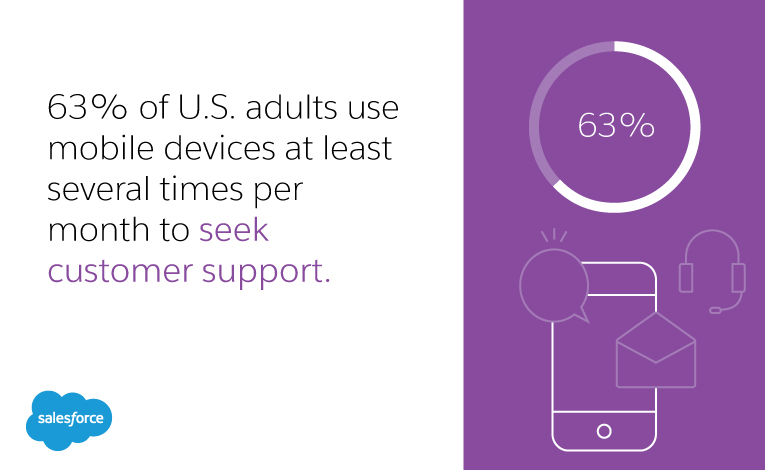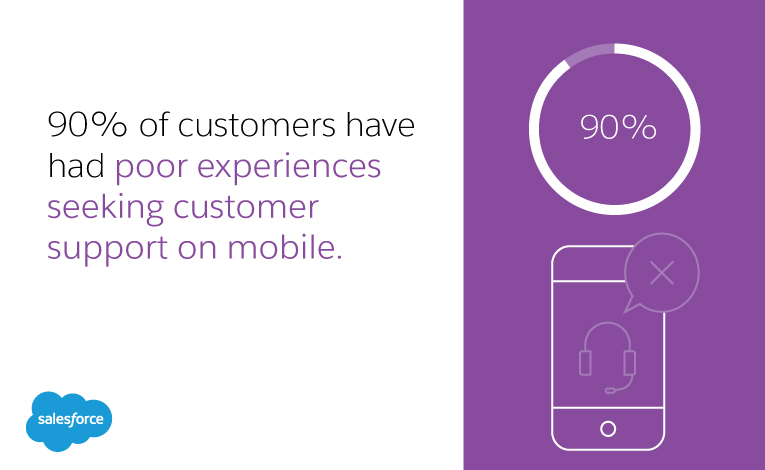Customer experience management
5 Steps for Boosting Customer Experience Management | Salesforce

No customer experience is isolated. Whether it’s a bad review or a good tweet, a recommendation to a friend or a rant to a neighbor, word always gets around. There might have been a time when a customer’s experience remained between that person and the business in question, but nowadays customer experience is shared, with both satisfied and dissatisfied customers able to spread the word across the internet. This has had a huge effect on business priorities — it is estimated that by 2020, customer experience will be the most important differentiator between brands, overtaking both price and product.
This naturally makes customer experience a crucial focus for any business looking forward. The main problem with customer experience management however, is how do you improve something that is so difficult to measure? Here are five steps to help you accomplish exactly that:
1. Get a Better Grasp of Your Customers’ Wants and Needs.
Who exactly is your core target audience? Do you know them, what they need, and what specifically you can provide for them? These are all important questions to ask and answer in customer experience management. It’s impossible to give your customers what they want, if you do not know what that is. Every company representative, from sales and marketing to customer service, should have a clear image of your customer base, along with their wants and needs.
It’s also helpful to constantly re-evaluate your customers. How have their needs changed and developed over time? Most importantly, you need to make sure that you are truly setting yourself apart from your competitors, by helping your customers to feel uniquely understood. There are enough businesses out there that treat their customers like nothing more than walking resources. Be the exception. Get to know the people who keep you in business, provide effective solutions to their unique concerns, and treat them like individuals, not numbers.
How can you know what your clients want? The best way is to ask them. Poll your customers and study their habits, scan reviews and social channels. See what works, what doesn’t, and what they would like more of.

2. Understand Customers’ Habits and Patterns.
Once you understand who your customers are, you need to figure out how they act. A big part of understanding your customers is understanding how to reach them — where are they most likely to be responsive to communication, special offers, and so on? Is your demographic more likely to be found on Facebook or Twitter? Do they prefer to be helped over the phone, through social channels or live chat, or would they rather find their own solutions via customer portals, FAQ pages, etc.?
For example, 63% of U.S. adults use mobile devices at least several times per month to seek customer support. This makes a mobile support option an essential offering for customer experience management. Using the right kind of tools, you can discover exactly where and when to reach specific demographics. These tools often include CRM platforms and predictive analytics.

3. Establish a Company Persona and Voice.
The retail landscape now spreads across the internet, apps, email, social media, and brick-and-mortar stores. Customers may choose to interact on only one or two of these channels, but they are likely to base their entire opinion of your brand off of how satisfying those limited interactions are. Establishing a unified brand persona across every channel is important in making sure that the customer enjoys the same experience every time, and that it’s an experience you can be proud of.
Training and regular coaching for customer service, marketing, and sales reps is a good way to make sure that everyone in the company is not only familiar with the company voice, but that they are fully comfortable being everyday spokespeople for your brand — both in person and when using company platforms. If you are making use of a comprehensive CRM platform, it should provide built-in training programs and effective support options to help you accomplish your goals.
4. Give Each Customer a 1-to-1 Journey.
Furthering this idea of a unified company persona, customer experience management is becoming increasingly about crafting a complete, unified customer journey. There are now so many ways in which customers can interact with a company, so when a customer moves between channels, they are expecting to continue their journey in a seamless manner.
Work to make sure that there is communication and cohesiveness across channels and departments, so that no customer is lost at any stage in the funnel. This is where you can again use technology to make sure that these personalised journeys are happening. CRM platforms allow you to keep communication consistent, view past interactions and service or purchase history, send out targeted ads and offers, and provide cross-channel services such as click-and-collect.
5. Use the Right Tools to Facilitate Customer Experience Management.
A common thread throughout these tips has been the importance of utilising the newest technology to manage your customer experience. There are a lot of effective CRM platforms to choose from today, in what is a very competitive marketplace, and full customer experience management is now nearly impossible without them. This is why IT spending across the country is expected to increase by 2.7% in 2017.
However, simply using some form of technology is not enough. Statistics have shown that using the right tools is an integral part of providing and managing an optimum customer experience that can boost revenue. When you consider that 90% of customers have had poor experiences seeking customer support on mobile, it is clear that a lot of companies have work to do in order to improve their customer experience across every platform (not just the traditional ones).



